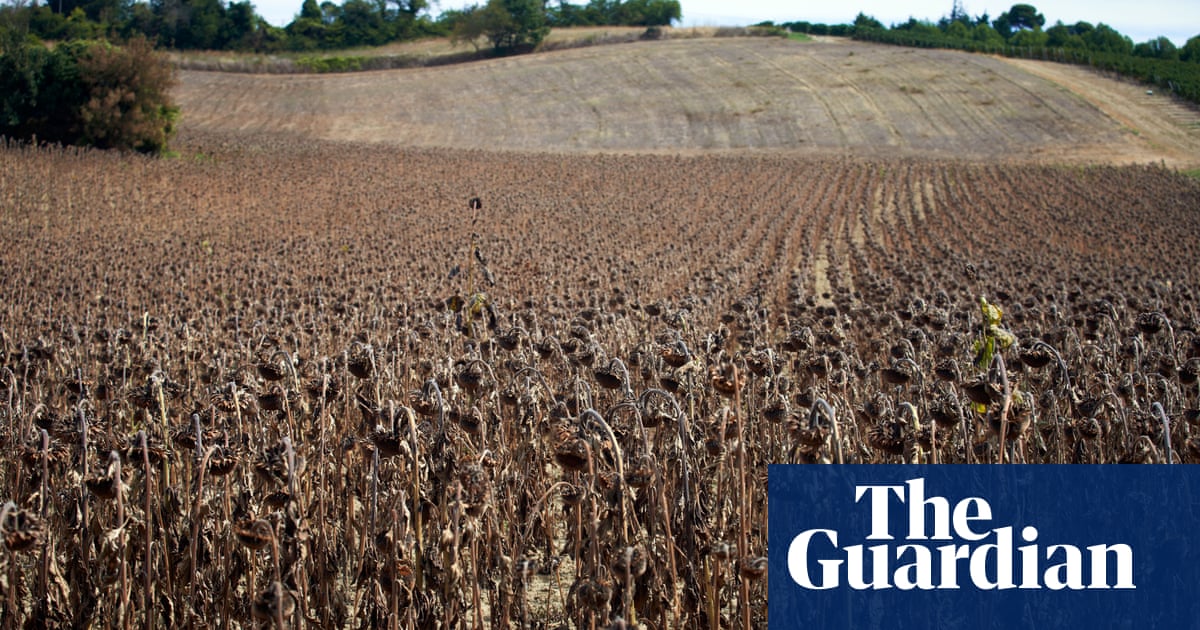An analysis has determined that the cost of energy and the climate crisis have contributed to a £600 increase in the average UK household’s food bill.

A recent report reveals that the global climate crisis and rising energy costs have caused British households to spend an additional £600 on food in the last two years. The report also predicts further increases in food expenses in 2024.
The ECIU thinktank warns about the repercussions of rising extreme weather events on food production. They stated that global warming is directly contributing to the crisis of high cost of living.
Based on a study conducted by researchers from Bournemouth, Exeter, and Sheffield universities, about one-third of the food price inflation in the UK this year can be attributed to extreme or abnormal weather conditions.
Due to the rising energy costs caused by Russia’s takeover of Ukraine, British households have been faced with an extra £605 in food expenses for 2022 and 2023. Although energy prices have since decreased, the report cautioned that the effects of the climate crisis are still on the rise.
Tom Lancaster, a land analyst at ECIU, stated that the effects of climate change are significantly impacting global food production, resulting in an increase in prices at grocery stores. According to Lancaster, the climate crisis has caused the average household food bill to rise by the equivalent of six weekly shopping trips in 2022 and 2023.
According to analysis, the price of the climate crisis increased from £171 in 2022 to £192 in 2023. This rise outweighed the impacts of decreasing energy prices and had a more significant effect than the increase in energy bills.
The latest data reveals that the cost of food and beverages increased by nearly 20% this year, reaching its highest point since the 1970s. This rise is due to food supply disruptions caused by extreme weather events and an increase in energy expenses for producers.
Inflation in food prices has decreased in the past few months, but is still at exceptionally high levels of almost 10%. Additionally, prices are still close to record-breaking levels following severe storms, such as Storm Babet, that caused flooding in agricultural areas and negatively impacted potato and vegetable harvests leading up to the holiday season.
In 2022, the UK experienced a drought that affected the production of essential food items like potatoes and onions. This was followed by a particularly wet harvest in 2023, and then a record-breaking hot September.
In the past year, heatwaves in the Mediterranean, India, and South America have significantly impacted food production and prices. Essential items like sugar, rice, and tomatoes were all affected by extreme weather conditions, such as droughts in India. Additionally, the price of olive oil increased by 50% due to two consecutive years of drought and heatwaves in Spain and other major exporting countries in southern Europe.
Next year, the El Niño weather system may worsen the situation, potentially causing more intense weather conditions and higher food prices.
Prof Wyn Morgan of Sheffield University, one of the report authors, said: “Given we expect climate impacts to get worse, it is likely that climate change will continue to fuel a cost of living crisis for the foreseeable future.”
According to Anna Taylor, the executive director of the Food Foundation, the government should consider ways to make households better equipped to handle fluctuations in prices due to the climate crisis.
Skip over the advertisement for the newsletter.
after newsletter promotion
She urged the government to reconsider their plans for a horticulture strategy that aims to increase fruit and vegetable production in the UK and lessen dependence on crops from southern Europe. This region is facing growing risks of drought and extreme heat due to the climate emergency.
According to a report by the Food Foundation, retailers and establishments in the UK are not providing an accessible and appealing food environment for affordable healthy options.
The study discovered that nutritious food is already twice the price of unhealthy food per calorie, and that sustainable alternatives to meat and dairy can also be costly.
According to the report, the majority of main dishes served at pub chains contain more than half of the recommended daily intake of calories, saturated fat, salt, and sugar. Additionally, only 1% of food advertisements promote fruits and vegetables, while 9% focus on meat and dairy. Furthermore, meat and dairy products make up 21.5% of buy-one-get-one-free deals, while fruits and vegetables only make up 4.5% of these deals.
According to Lancaster, the UK’s farming system is currently reliant on fluctuating prices for oil, gas, and fertilizers. This has resulted in a dangerous combination of extreme weather, expensive gas, and global uncertainty, leading to inflation in food prices.
He stated that implementing measures to promote sustainable farming not only reduces emissions, but also increases the resilience of our food production to extreme events like floods and droughts. The government’s initiatives in England to encourage greener farming through the implementation of hedgerows, improved soil health, and tree planting programs are crucial for ensuring future food security.
Source: theguardian.com


